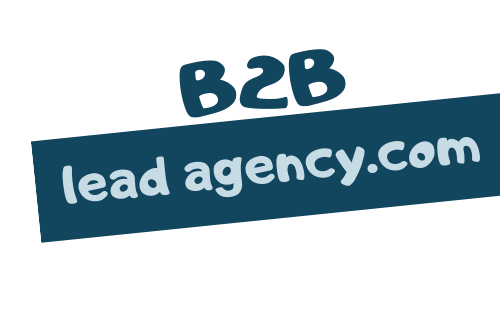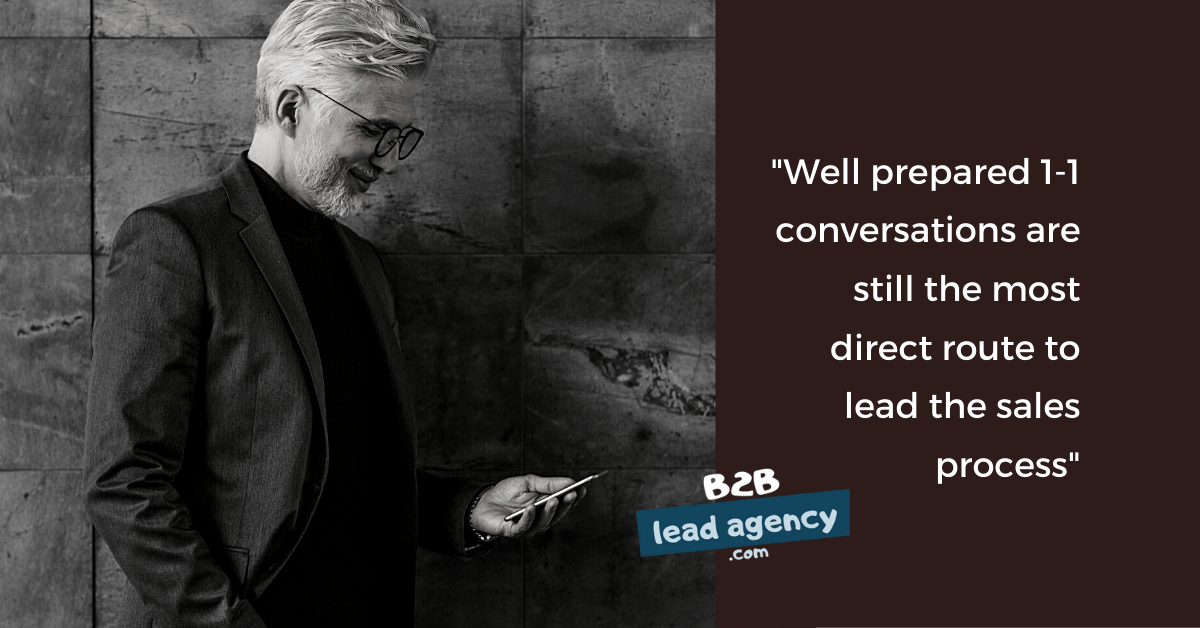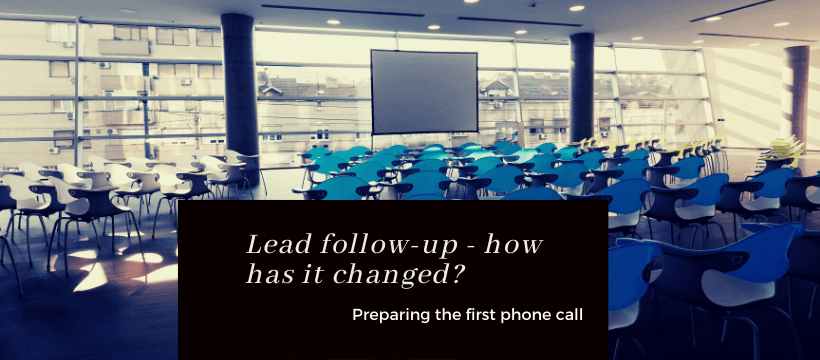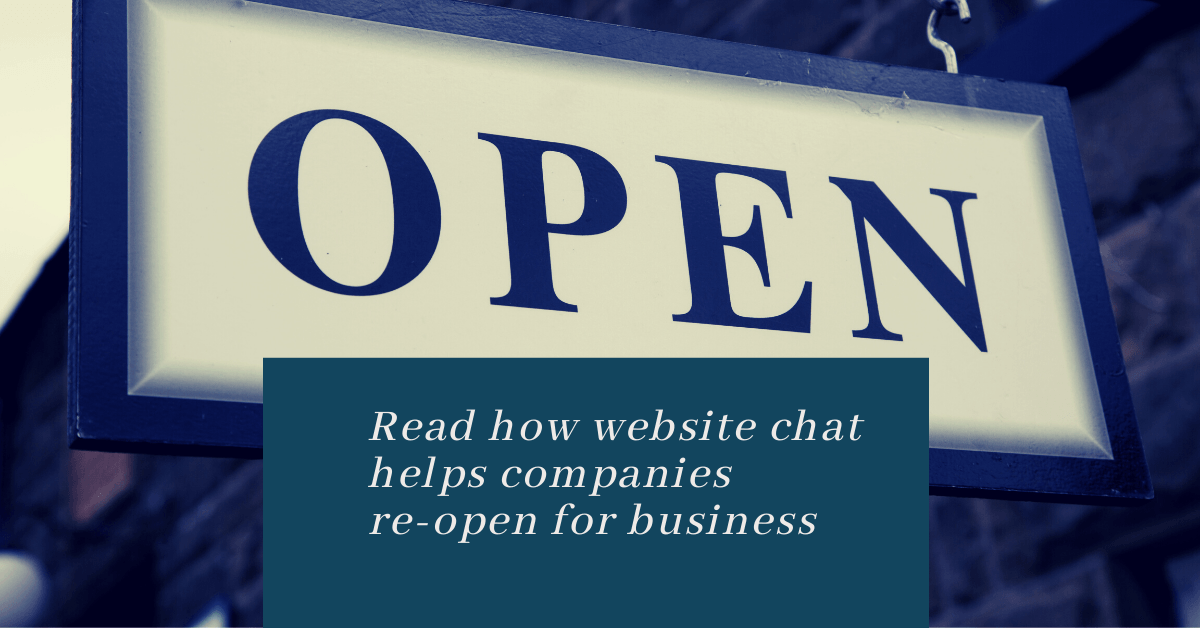So what separates the good sales pitch from the bad?
Naomi Campbell • July 10, 2020
The perfect telephone pitch that can change sales results starting tomorrow …
What to say and how to say it?
During my 15-year career in sales development, I’ve built and seen many sales pitches. I’ve also been pitched by numerous salespeople — some good and some bad.
So what does it take to sound remarkable, compelling and convincing on the phone?
To find out, our call analyst Jo, screened over 500 sales calls in an 8-month period. What we learned was that ALL the best-converting sales pitches include the exact same elements.
If you know what these elements are, you can easily replicate their success.
Keep reading to learn what those elements are — and how you can use them to craft your own killer sales pitch.
First, though, let’s address the elephant in the room…

Scripted vs. Freestyle Pitch Guides
The debate is ongoing. Some organisations swear by the effectiveness of a sales pitch script that reps can read word-for-word. Others feel strongly that a freestyle call guide allows reps to initiate a more natural conversation with customers.
Both are true. The sweet spot is actually somewhere in the middle.
The benefit of starting with a sales script is that you can plan exactly what you’re going to say and how you’re going to say it. But once started you’ll never stop encountering new scenarios and new ways to address these.
So a script never reaches its completion state. It evolves and becomes second nature for most callers after 30 or 40 solid conversations and therefore starts to sound more natural with improvised and embellished elements.
Now, let’s look at how to make a good sales pitch…
There are 6 Essential Elements in Every Good Sales Pitch. Keep in mind, there is no such thing as a one-size-fits-all approach. But if you can answer a prospects’ most basic questions in your sales pitch, you’ll have a great jumping-off point to pitch effectively.
Based on our study of 500 sales calls, these basics include 6 elements that MUST be included:
1. Why you
2. Who your company is
3. Pain points
4. Benefits
5. Validation and referrals
6. Close
This Is What Makes A Good Sales Pitch
Read how to apply it below and takeaway a free pitch template to get yourself started.
1) Why You & Why Your Organization
Let’s be honest, when someone you don’t know calls you, the first thing you want to know is “what do you want from me”. So, get that out straight at the beginning of the conversation.
You can immediately separate yourself from other salespeople by showing that you have done your research on the person or company
you
are speaking to. Useful information like this can easily be found on LinkedIn, Social Media, Data providers or even Google. For Example:
“I know that you are responsible for ____ at your company.”
“I know you’re currently looking at projects in relation to ____ at the moment.”
“I read an article you posted online about ____”
“I can see you were recently promoted to the position of ____.”
A powerful way of starting a conversation is by using a referral from someone else
within the target company. However only use this if you have actually spoken to someone! Don’t lie and say you have spoken to someone when you have not. It is dishonest, you will get found out and it is not a good way to start a business relationship. For Example:
“The reason for calling is that I had a conversation with your colleague Simon about ________ and he told me you would be the best person to speak to in regards to what we are able to do for your company”
If you can’t do any of the above, then simply say something like: “The reason for calling is I know you would be the best person to speak to about ________ as I understand this falls under your responsibility at your company. “
2) Who Your Company Is & What They Do
That is often one of the hardest parts to formulate in your pitch, as most salespeople focus far too much on who their company is and what they do.
This needs to be very simple and only needs to be one or two sentences, something like:
“We are specialists in XYZ and we help enterprises solve _________.”
Think about how you would describe what your company does in a nutshell? Has someone already figured it out? Here’s a tip: ask the marketing folks on the fly. You don’t want a printed statement that reads well but sounds awful.
The simpler and shorter, the better.
3) Pain Points
Most solutions are born out of the idea that there is a problem you need to solve. The technology is created to fix the problem, and you should highlight that. Clearly describe the pain (problems) your prospect is experiencing that your solution resolves. Keep it to a maximum of 3 problems.
“Lots of companies introduced xxx in the “90’s” to improve xxx, where do you sit with this? As a result what challenges eat into your time ________. Does that mean you’re not getting ______ because of ______ and ______. ”
If you want to make the pitch more conversational, this might be a good place to add in multiple-choice questions, which can’t be answered with a simple yes or no, and it helps you to qualify that your product/service is relevant.. Something like:
“What would you say your biggest challenges are in regard to _____ at the moment? Is it more about reducing cost or increasing visibility or both?”
4) Benefits
Benefits, Not features. It’s very important to make that distinction, because in the beginning, people aren’t necessarily focused on what your solution does or how it does it. They’re more interested in the outcome.
What are the main benefits your product/service will bring to the company you are speaking to? Will it make them more productive? Will it save them time or make them more efficient? Will is save them or make them more money?
This is the most important part of your pitch. This is where you will be able to convince the prospect that it is worth their time to look at what you’re offering.
If you don’t know how your product or services can benefit different customer types, you will not be able to pitch it effectively. Try, where possible, to back up what you’re saying with facts, figures, and percentages.
Something like: “Our solution uses _______ to provide the best and most ______ on the market. The main benefits are not only that you get ______, but that we can also reduce the time your team spends managing this area by up to 30x, and we can typically save you 40% on costs.”
5) Validation and References
An excellent way of validating what you’re saying is to reference companies/organisations who are current customers. Even better, reference customers who are direct competitors of the company/organisation you are pitching. But remember not to scare prospects with your references.
If you are speaking to an early stage start-up, telling them that one of your clients is Google will scare them — they may think they can’t afford you. So, choose your references wisely and plan before you hit the phone.
“We have been able to help companies like Coca Cola, Pepsi, and Starbucks be much more efficient and save huge sums of money.”
6) Close
There are varying opinions on how you should close a sales engagement touch-point. Some say you should ask for a date and a time that would be suitable for your next engagement. The problem is this gets the prospect thinking about whether that appointment is viable, based on the work they are currently doing.
What we have found to be more successful is reiterating the benefits and asking the prospects about the value it would bring to their company. In other words, sell the value of the zoom call. With a question like this, the prospect is more likely to think about the issues they’re struggling with and what they will get from having the call you are trying to arrange.
If someone’s going to take up their time talking about a service or product, they want to know the time will be well-spent, whether they buy your product or not.
“What I’d like to do is arrange a time in the next few weeks for my colleague to show you how we’ve helped companies like yours specifically. Is your diary open on xxx for another chat?
The Takeaway
Okay, so now you have the 6 elements that the best sales pitches include. With this information, you have everything you need to put your power pitch together, except for a narrative.
Free Sales Pitch Template
Remember, a good pitch is like good storytelling. It’s got to have a clear beginning, middle and end. So write your intro, then weave together a narrative that includes these six elements. Not only will you create a stellar story, you’ll have a winning formula.
Take away this free template and start pitching.
Put a managed service of; Lead follow-up, lead nurturing and lead generation in place
We address a number of strategic sales development challenges. Our work with senior executives to deliver lead generation programmes not only contributes significantly to team pipelines but also enhances the sales & marketing workflow for sustained revenue generation.
Take the ‘ouch’ out of an ‘outsourced’ sales service. Get more advice
on optimised lead generation for corporate brands.
Book a call-back
Share this blog

B2B chat is the easiest tool to get wrong - according to corporate marketers - whether used on websites, webinars, social forums or a sales persons WhatsApp account. As you equip your sales teams for the new on-line journey, this blog introduces the importance of empathy in B2B chat etiquette.
Sales Enablement for B2B Lead Generation

More often than not, calls and posts coming-in to your business originate on a mobile phone. But what if that user wants to reach you instantly without making a call? This article shares 5 tips to maximise instant engagement opportunities through: text, email, live chat, call-me buttons and social sites.
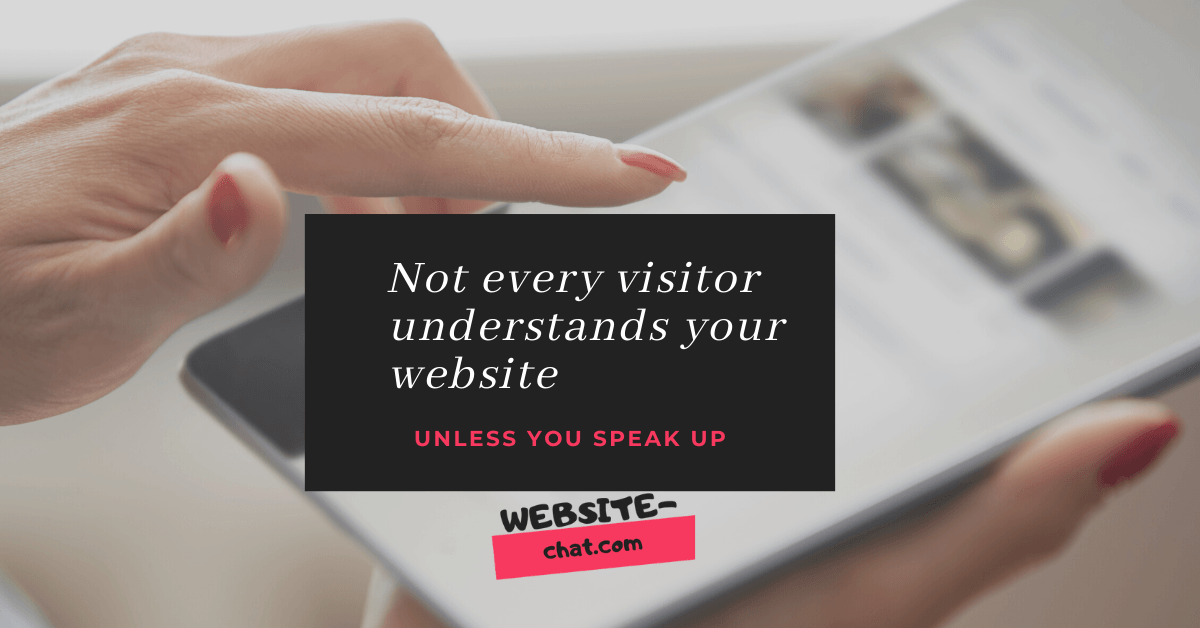
If we're cautioned about putting live chat on every page of our websites - where should it go? This article highlights four types of web page where chat services work well. Whether you're setting-up a new online attendant service or tweaking an existing one, it's worth mapping your objectives with the page recommendations here to see if you're aligned.
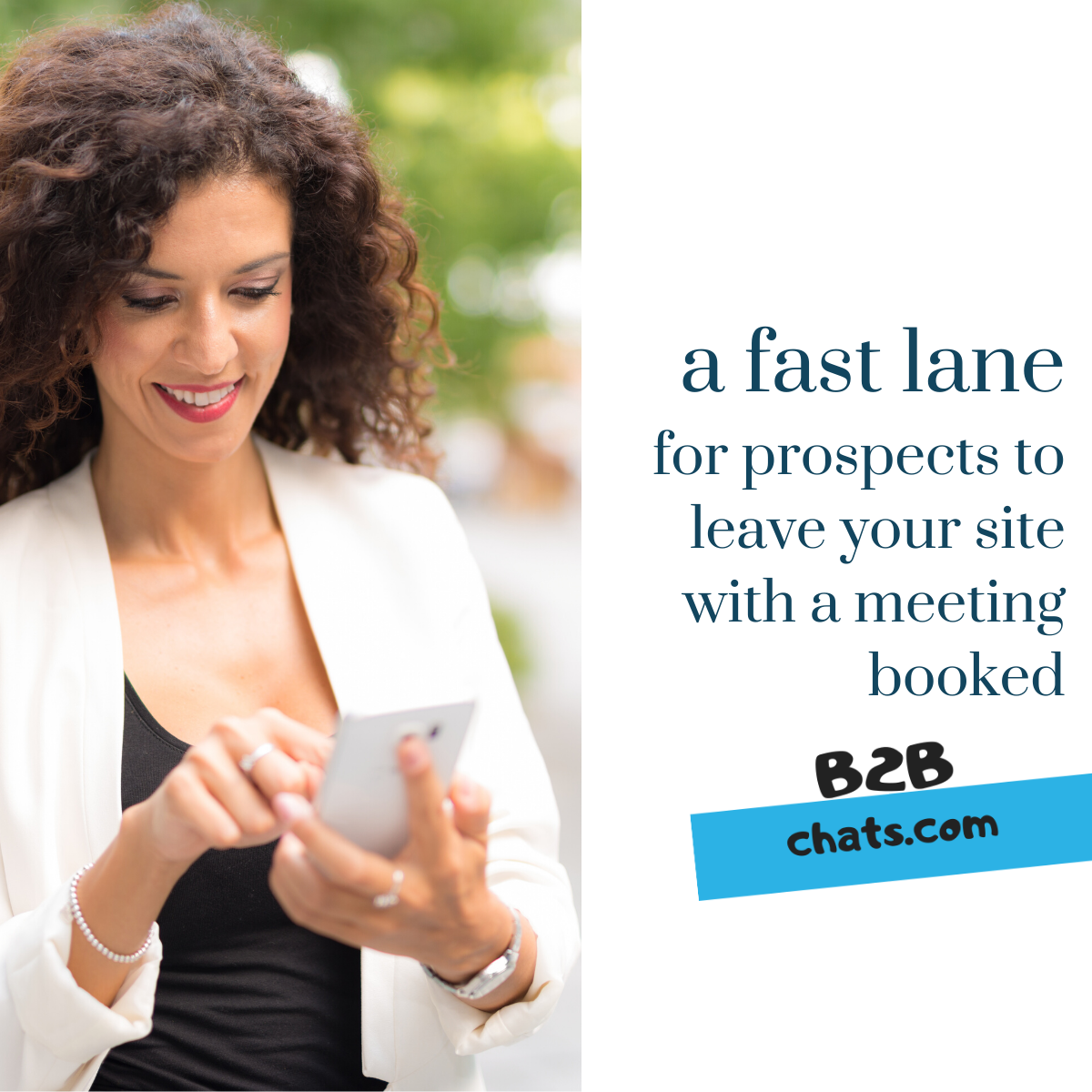
This year '000s of companies have deployed live website chat on their corporate sites. Should you add advisers and chat bots to yours? This blog discusses the business benefits of B2B live chat engagement. Read 5 best practice steps to start, run and optimise a live chat service on your website. Consider the option of outsourcing to a chat services agency who knows your industry.
